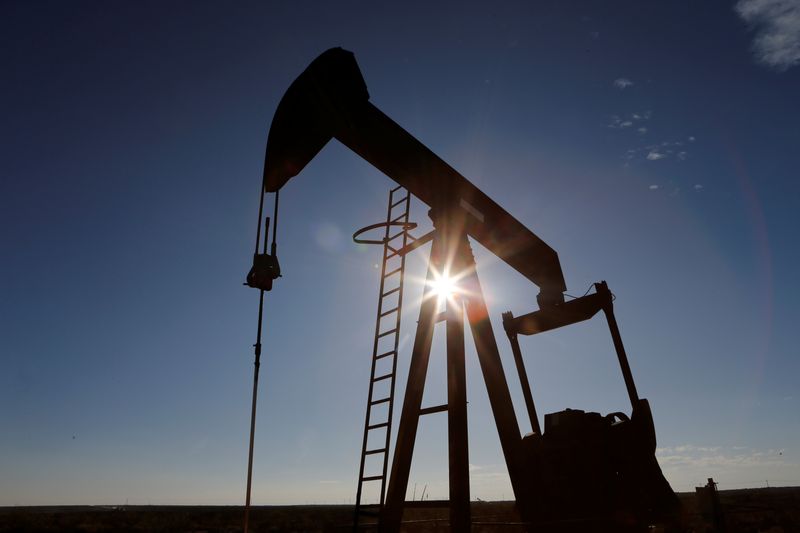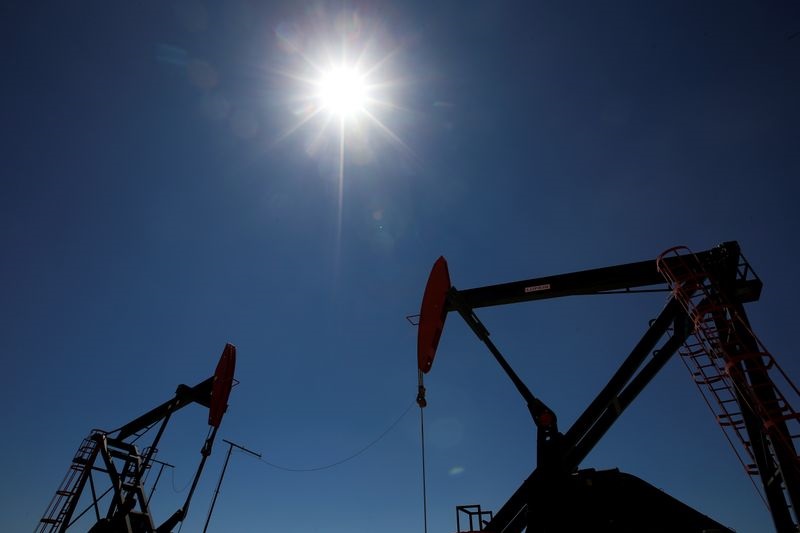By Scott DiSavino
NEW YORK (Reuters) -Oil prices fell about 1% on Wednesday on concerns about weak U.S. gasoline demand and economic data that could lead the U.S. Federal Reserve to keep interest rates high for longer.
High interest rates used to tackle persistent inflation can depress economic growth and reduce oil demand.
futures fell 62 cents, or 0.7, to settle at $83.60 a barrel, while U.S. West Texas Intermediate (WIT) crude fell 60 cents, or 0.8%, to settle at $79 ,23.
The second-month Brent front premium, known in the industry as backwardation, fell to the lowest level since January.
When a market is in backwardation, energy companies are more likely to pull oil from storage and use it now rather than wait for prices to fall in the future. If the market shifts into contango, with future contracts worth more than the first month, energy companies could start stockpiling oil for the future, which could push down prices.
U.S. consumer confidence unexpectedly improved in May after worsening for three months in a row due to optimism about the labor market, but concerns about inflation persisted and many households expected higher interest rates in the coming year.
“Hopes for Fed rate cuts are being pushed further into the year,” analysts at energy consultancy Gelber and Associates said in a note.
Concerns about U.S. gasoline demand, meanwhile, have kept gasoline futures prices at two-month lows, pushing gasoline and 321 crack spreads, which measure refining profit margins, to their lowest levels since February.
“Gasoline demand is still surprisingly weak to keep supply at normal levels as bullish seasonality fades,” said analysts at energy consultancy Ritterbusch and Associates.
Looking ahead, investors are awaiting the release on Friday of the US personal consumption expenditures (PCE) price index for April.
The PCE, the Fed’s preferred inflation barometer, is expected to remain stable on a monthly basis. Expectations about the timing of rate cuts have become shaky, with policymakers wary of persistent inflation.
BULLISH FACTORS
The market is also looking for U.S. oil storage data from trade group American Petroleum Institute (API) later on Wednesday and from the U.S. Energy Information Administration (EIA) on Thursday. That data will be released a day later than normal due to the U.S. Memorial Day holiday on Monday.
In a forecast that should support crude oil prices, analysts predicted that U.S. energy companies pulled 2.0 million barrels of crude from storage in the week ending May 24.
That compares with an increase of 4.5 million barrels in the same week last year and an average increase of 1.1 million barrels over the past five years (2019-2023).
Traders and analysts also said they expect OPEC+, which includes the Organization of the Petroleum Exporting Countries (OPEC) and allies including Russia, to make a voluntary production cut of about 2.2 million barrels per day (bpd) at its meeting on Sunday to enforce.
China, the world’s largest economy after the US, will grow 5% this year after a “strong” first quarter, the International Monetary Fund said, upping its previous forecast of 4.6% growth adjusts.
However, the IMF said it expects slower growth in China in the coming years.
Increased tensions in the Middle East also held back the decline in crude oil prices.

Israel sent tanks for raids on Rafah and predicted that the war against Iran-backed Hamas militants in Gaza would continue throughout the year.
Iran-allied Houthis in Yemen, meanwhile, launched attacks on six ships in three different seas and Iran’s semi-official Tasnim news agency said Tehran’s sea-launched ballistic missile Ghadr had been made available to the Houthis.


